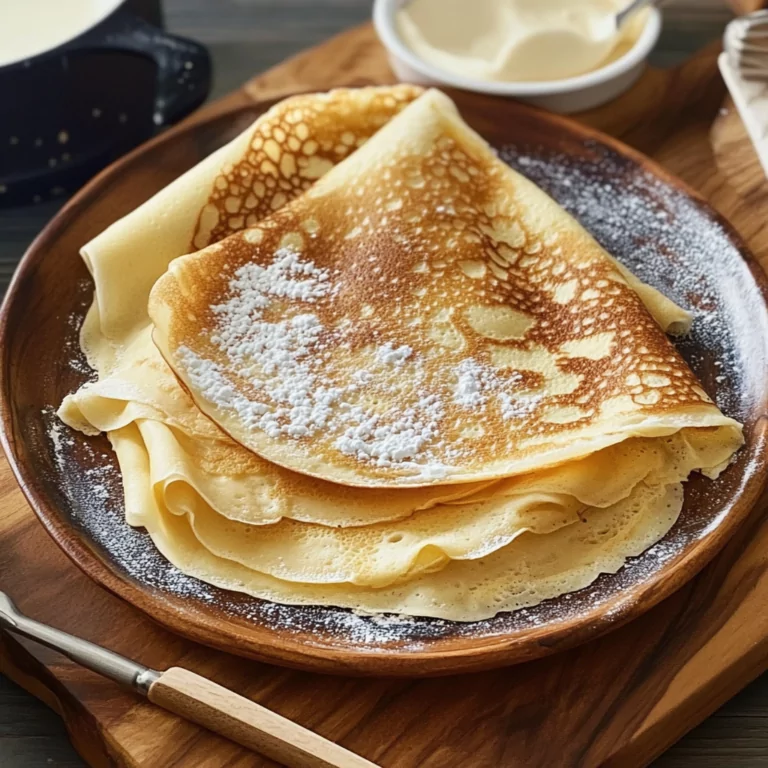Step 2:
Make a well in the center of the dry mixture. Crack in the eggs, previously beaten with a fork. Begin gently incorporating the eggs into the flour, mixing from the center outward.
Step 3:
Add the milk gradually, continuing to mix gently. This helps avoid lumps. If lumps appear, run an immersion blender through the mixture to smooth it out. You should obtain a fluid consistency, neither too thick nor too runny.
Step 4:
Next, add the melted butter and mix well until you obtain a smooth paste. You can let the paste rest for 30 minutes in the refrigerator, but it’s not essential.
Step 5:
Heat a non-stick skillet over medium heat. There’s no need to add any fat, as the butter is already in the batter.
Step 6:
Pour a small ladleful of batter into the center of the hot skillet. Immediately tilt the skillet, rotating your wrist to spread the batter into a thin, even layer.
Step 7:
Cook for about one minute. When the edges begin to loosen and brown, flip the crepe with a spatula. Cook for another 30 seconds to a minute on the other side.
Step 8:
Transfer the crepe to a plate, then repeat until all the batter is used up. Stack the crepes under a clean cloth to keep them fluffy and warm.
With this simple method, your crepes will be golden, light, and delicious. Perfect for adding any filling you like!
How long should you cook crepes?
Crepe cooking times depend mainly on the thickness of the batter and the temperature of the pan. However, there are a few simple guidelines to follow to ensure perfect cooking every time.
As a general rule, each crepe requires approximately 1 to 2 minutes of cooking time per side. Here are some helpful tips:
Always heat the pan over medium heat before adding the batter. A pan that’s too cold will make the crepe thick and bland, while a pan that’s too hot will burn the batter quickly.
As soon as the edges of the crepe begin to pull away slightly,
